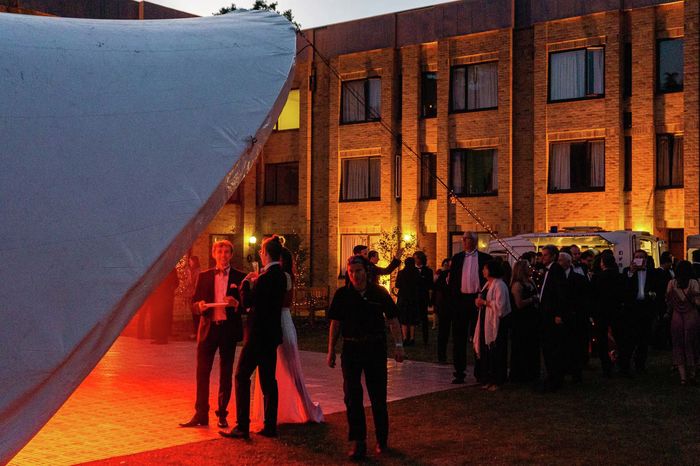Each street in Cambridge hums with activity. Whichever way you turn, wherever you look, you see centuries-old hives of fierce discussion and debate, and the home of equal parts sadness and revelry – the pub. They are as central a part of a Cambridge student’s life as the library, and without them university life would be very different; but might it also be less beautiful, less storied? From medieval facades and low wooden beams to the fourth-largest Wetherspoons in the Country, each of these pubs has a history to rival most of our colleges, and it’s high time to know the stories behind some of the best known, or most notorious. So pour yourself a drink (alcoholic or otherwise), grab your favourite pub snack, and enjoy.
“Each of these pubs has a history to rival most of our colleges”
The Pickerel
Where better to start than the first proper Cambridge pub I ever visited, and reputedly the oldest continuing pub in Cambridge. It’s not hard to tell that part of the current building dates from the 1500s, built even before the pub’s first recorded license of 1609. In the intervening four hundred years, the pub has been a gin palace, an undertakers, a hotel, and a brothel; above the sign remain carvings of naked figures as a reminder of this time. Its courtyard, now a top class beer garden, has been equally put to good use, at one time holding a small brewery and at another housing stables. When it finally did settle as an inn, it became a favourite of Magdalene’s students and staff. When C.S. Lewis came to the college as a Professor in 1954, it very quickly became his favourite pub. Lloyd Grossman was also a regular whilst studying at Magdalene. Drinking in such great company, under the low-hanging beams of its 15th century interior, it’s hard to feel lonely. The truth is though, you’re never alone when drinking in The Pick, because it has a resident ghost. Numerous staff members and landlords have all claimed to see the spectral figure of the former Landlady, who reportedly drowned in the Cam in the 1950s and haunts the pub to this day.
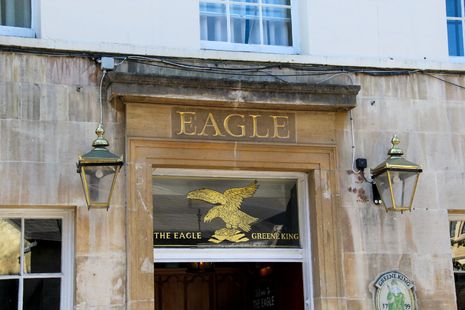
The Eagle
There are no prizes for guessing this one was going to be mentioned. The site was purchased by Corpus around 1458, but The Eagle as we know it began life as ‘The Eagle and Child’, a Coaching Inn, in 1667, and was affectionately known as ‘The Bird and Baby’ by undergrads. If you make your way to the pub’s back room, the R.A.F. bar, your eyes can’t help being drawn to the countless scrawled signatures and squadron numbers that adorn the room’s ceiling. Across the local countryside in World War Two there was reportedly an airbase every eight miles, and British and American Airmen would descend upon The Eagle; there are supposedly over 60 British squadrons featured on the pub’s roof. Of course, the blue plaque outside tells you that The Eagle was where Watson and Crick celebrated the discovery of DNA’s structure; though it was Rosalind Franklin’s photograph of DNA, shown to Watson against her knowledge, that enabled the discovery. It’s a theft that leaves as bitter a taste as paying over £7 for a pint there.

The Baron of Beef
With probably one of the most unique pub names in the country, the Baron is well known and well loved by all. Its name comes from King Henry VIII’s favourite cut of meat – both sides of the rump joined at the backbone – which, according to legend, he knighted “Sir Loin, Baron of Beef”. The site itself originally belonged to the buildings surrounding St. Clement’s Church, as part of its hostel complex. Clearly being a monk in the 15th century was thirsty work, as there was a brewhouse attached to the complex. The site was also used as a saddlers, or saddle maker. That was until 1752 when it definitively became an alehouse, and the name’s first recorded use came in the 1800s. Its extensive, oblong building used to feature a full length bar all across the pub’s left hand side, now since shortened, and it was reportedly a favoured pub of Douglas Adams. A very good mate of mine explained: “biased by their friendly staff, ramshackle pub quiz, and very decent pint of Guinness, the Baron is my favourite pub in Cambridge. It doesn’t have The Eagle’s nooks and crannies or The Pick’s decor but it serves a mean pint for a good price with all the sport a person could want on about 12 tellies.” In its spot across the road from St John’s, the Baron has not only seen Cambridge shapeshift, but has shifted with it.
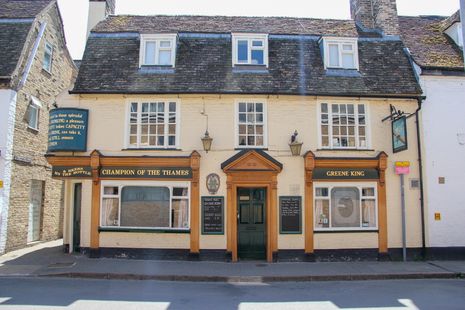
Champion of the Thames
A favourite of the infamous King Street Run, the Champion of the Thames is a beautiful relic of the 19th Century. Its wood-panelled interior dates back to the 1800s and its origins as an Ale House. It is this heritage that contributed to it being awarded CAMRA Cambridgeshire’s Pub of the Year 2024. Its name is tied up with the city’s long history of rowing: apparently an unnamed oarsman moved to Cambridge in 1860 after having claimed victory in a race on the Thames, and he moved into lodgings above the alehouse. Admirers would send letters to the pub, addressed to the unknown “Champion of the Thames,” and the name stuck. Its windows feature the stencil of another rowing champion, Canadian Edward Hanlan, who in 1880 raced, and won, on the Thames’s Putney to Mortlake course. The pub’s sporting association does not stop there, however, as in 1995 the pub sponsored and gave their name to a local boat club, now known as Champion of the Thames Boat Club. The Champion of the Thames remains one of the most storied, well-preserved, and unique pubs the city centre can offer.
“In a world of schooner scorers and American pale ales, it’s easy to ignore the history and character of these buildings”
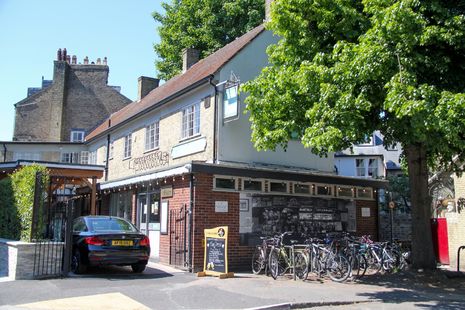
The Maypole
Admittedly, the Maypole is a rarity in this list as it’s not a chain pub, but rather has been owned outright by the Castiglione family since 2009, who took over its day-to-day running in 1982. However, its history goes much further than that: there has been an alehouse on the site since 1851, and it has changed hands numerous times. A notable licensee came around 1897: celebrated long-distance runner, Charles Rowell. He was born in Chesterton, and at the time of his death in 1909 he was an international celebrity and is credited with being an exponent of ‘pedestrianism’ – an early form of race walking. But the Maypole hasn’t always had the monopoly on its patch in Portugal Place: three doors down there used to be another pub, The Plume of Feathers, that was demolished in 1953 to be replaced by a car park. Thankfully, such a fate did not come to the Maypole, and having repaired the minor bomb damage that Portugal Place suffered in the Second World War, it is now in great shape. The murals of its beer garden provide a great way to see the city’s landmarks without having to leave your nice, heated seat and crisp pint.
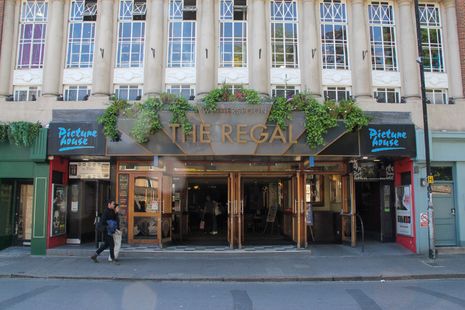
The Regal (Wetherspoons)
A look at Cambridge’s pubs would be incomplete without the great unifier, upon which all members of this University invariably descend: The Regal. Many know its original incarnation as a cinema in the 1930s, the largest in the city, but as the century wore on it took on another role. It was one of Cambridge’s leading music venues: in 1963 the Beatles played twice, and the rest of the decade saw acts like Stevie Wonder, the Rolling Stones, and the Kinks perform. It returned to use as a cinema until its closure in 1997 – and then Tim Martin came along. The lowered seating area beyond the bar – in what is affectionately known as the Pit – holds another story: look closely at the floor and you’ll see a circular area that used to be a rotating dance floor. That’s right, we used to have that most elusive of clubs – a Disco Spoons. Nowadays, memories of its former glories are restricted to its unique cinema-themed carpet (every Spoons across the Country has its own, particular carpet) and a wall full of historical facts and pictures that made my job very easy. Overall, in a city with reputedly one of the most expensive night’s out in Britain, it’s safe to say The Regal performs a vital service.
And that brings to a close our whistle stop tour of Cambridge’s pubs; it goes without saying Cambridge has plenty more available if your thirst for knowledge still remains unquenched. So many of these pubs have artwork, letters, or old maps on their walls that recount their histories and the legends that have built up around them. At the very least you might be able to say that you have drank a pint in the same seat as Stephen Fry. In a world of schooner scorers and American pale ales, it’s easy to ignore the history and character of these buildings, so on your next outing, maybe pause before your pint, and think about the story of your surroundings.


